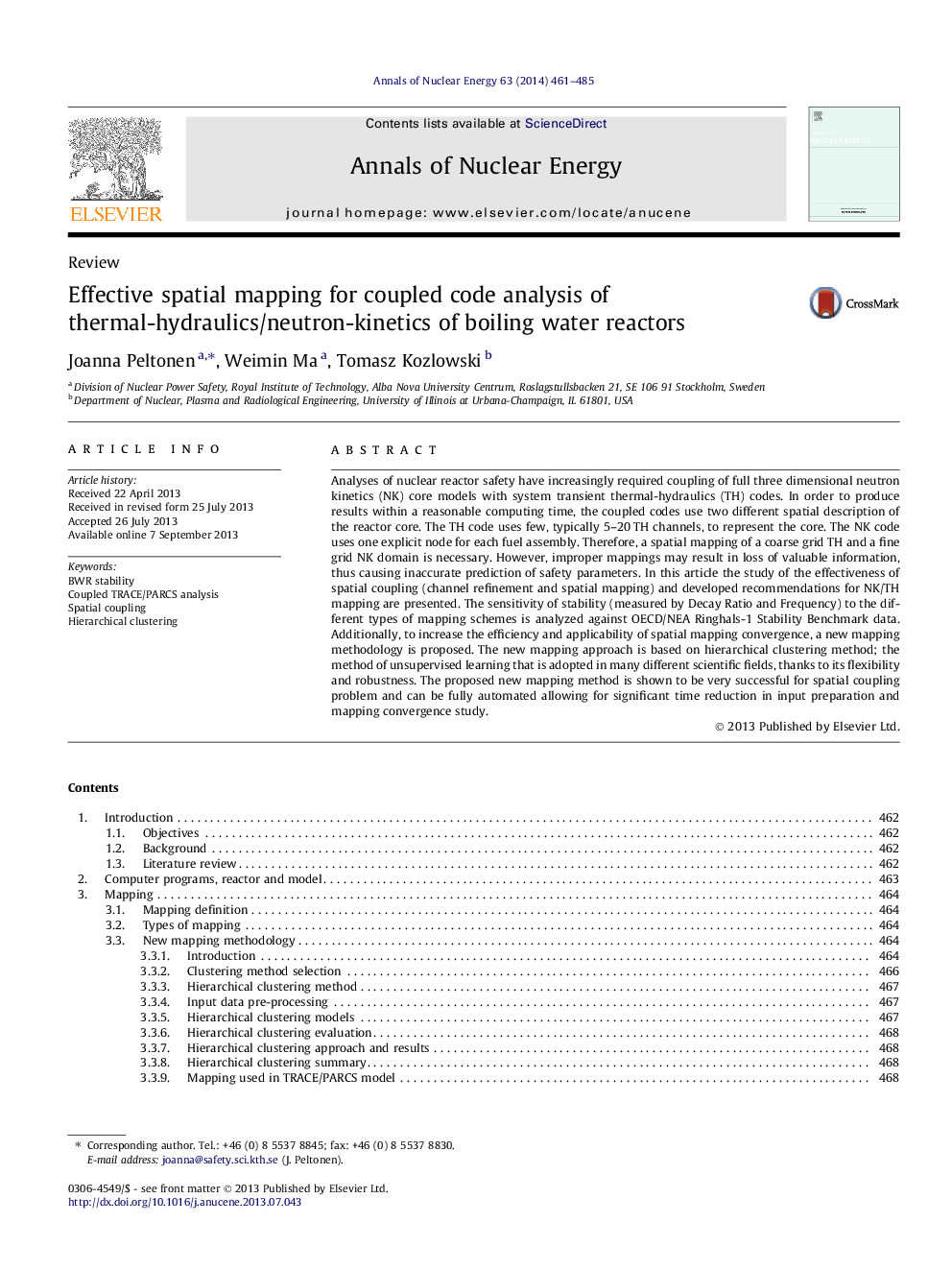| Article ID | Journal | Published Year | Pages | File Type |
|---|---|---|---|---|
| 8069658 | Annals of Nuclear Energy | 2014 | 25 Pages |
Abstract
Analyses of nuclear reactor safety have increasingly required coupling of full three dimensional neutron kinetics (NK) core models with system transient thermal-hydraulics (TH) codes. In order to produce results within a reasonable computing time, the coupled codes use two different spatial description of the reactor core. The TH code uses few, typically 5-20Â TH channels, to represent the core. The NK code uses one explicit node for each fuel assembly. Therefore, a spatial mapping of a coarse grid TH and a fine grid NK domain is necessary. However, improper mappings may result in loss of valuable information, thus causing inaccurate prediction of safety parameters. In this article the study of the effectiveness of spatial coupling (channel refinement and spatial mapping) and developed recommendations for NK/TH mapping are presented. The sensitivity of stability (measured by Decay Ratio and Frequency) to the different types of mapping schemes is analyzed against OECD/NEA Ringhals-1 Stability Benchmark data. Additionally, to increase the efficiency and applicability of spatial mapping convergence, a new mapping methodology is proposed. The new mapping approach is based on hierarchical clustering method; the method of unsupervised learning that is adopted in many different scientific fields, thanks to its flexibility and robustness. The proposed new mapping method is shown to be very successful for spatial coupling problem and can be fully automated allowing for significant time reduction in input preparation and mapping convergence study.
Related Topics
Physical Sciences and Engineering
Energy
Energy Engineering and Power Technology
Authors
Joanna Peltonen, Weimin Ma, Tomasz Kozlowski,
